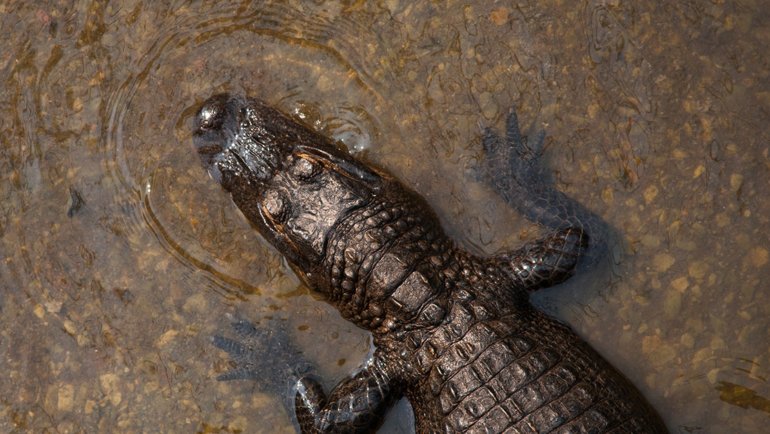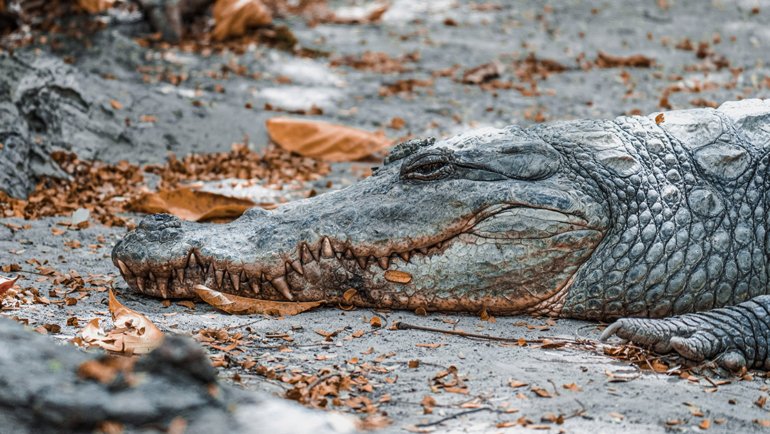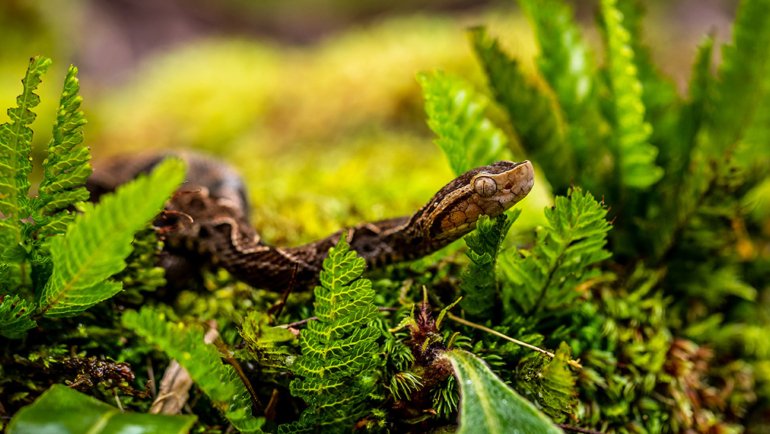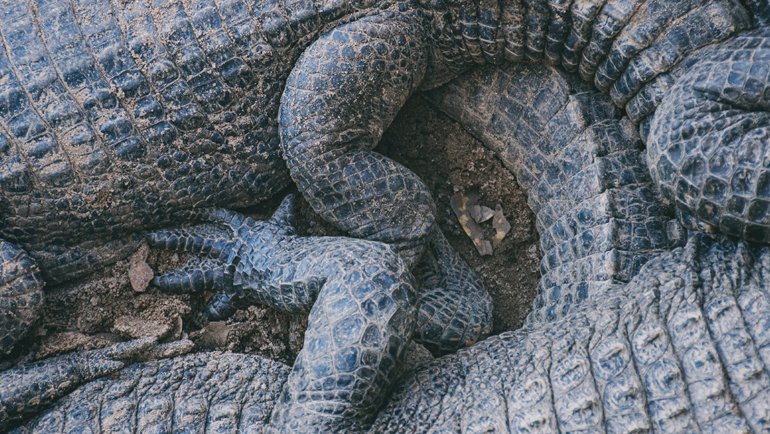Renowned for its uncanny ability to “walk on water,” the basilisk lizard has earned its nickname, the “Jesus Christ” lizard. Native to the tropical rainforests of Central and South America, these lizards possess unique adaptations and a captivating appearance.
With their agile movements and distinctive crests, basilisks are a marvel of nature. This article delves deep into the mysterious world of the basilisk lizard, shedding light on its behavior, habitat, and fascinating characteristics.
The Basilisk Lizard at a Glance
Classification
| Kingdom: | Animalia |
| Phylum: | Chordata |
| Class: | Reptilia (Reptiles) |
| Order: | Squamata |
| Family: | Corytophanidae |
| Genus: | Basiliscus |
| Species: | Varies (e.g., B. basiliscus for the common basilisk) |
Essential Information
| Average Size: | 2 to 2.5 feet (61 to 76 cm) including tail |
| Average Weight: | 200 to 500 grams (7 to 17.6 oz) |
| Average Lifespan: | 5 to 8 years in the wild; up to 10 years in captivity |
| Geographical Range: | Central America to northwestern South America |
| Conservation Status: | Least Concern (IUCN Red List) |
Species and Subspecies
The genus Basiliscus comprises several species, each displaying unique characteristics while sharing the general appearance and behavior typical of basilisk lizards:
- Common Basilisk (Basiliscus basiliscus): Often green or brown, they are known for a distinct dorsal crest that is more prominent in males.
- Plumed Basilisk (Basiliscus plumifrons): Mostly bright green with blue and yellow around the eyes. Males boast three crests: one on the head, one on their back, and one on the tail.
- Red-headed Basilisk (Basiliscus galeritus): As the name suggests, they have a striking reddish-orange head, contrasting with their green or brown body.
- Striped Basilisk (Basiliscus vittatus): Mainly brown or olive with yellow and black stripes, and they lack the dorsal crest found in other species.
While these species can be differentiated based on their coloration, size, and crests, all basilisk lizards share the distinctive ability to run on water, a trait that has contributed greatly to their fame.
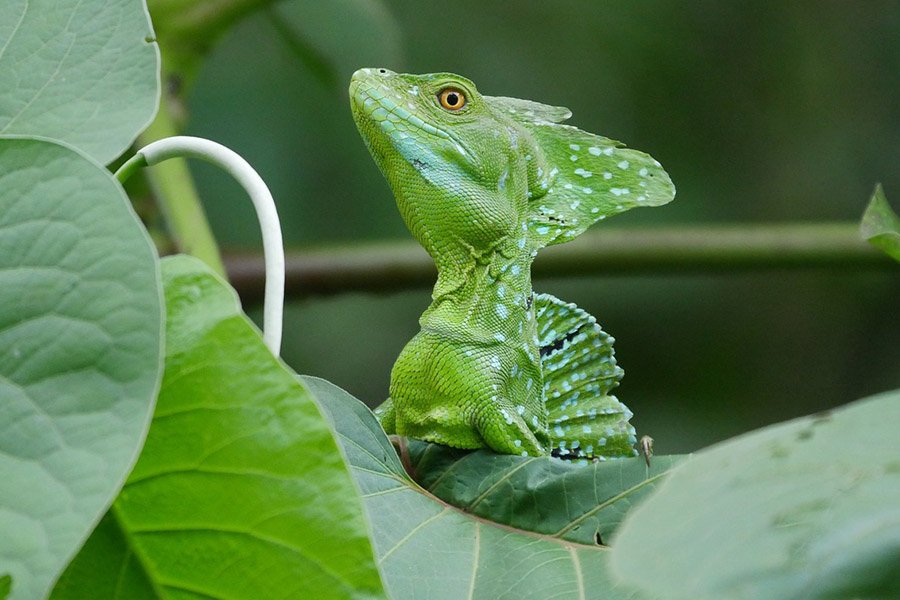
Description
The basilisk lizard’s most recognizable feature is its elongated toes on its hind limbs, fringed with scales, which allow it to run across water for short distances—this is the origin of its nickname, the “Jesus Christ” lizard.
Depending on the species, the body color ranges from vibrant green to shades of brown, often with varying patterns that aid in camouflage. Their eyes are large, with a yellow or golden iris, giving them a keen sense of vision.
Adult basilisks vary in size from about 2 to 2.5 feet (61 to 76 cm) in length, including their tail. They typically weigh between 200 to 500 grams (7 to 17.6 oz).
Sexual dimorphism is evident in these lizards. Males are generally larger than females and have more pronounced crests. In some species, like the plumed basilisk, males display three prominent crests—on the head, back, and tail—while females have smaller crests or none at all. The crests in males serve both as a display for attracting females and as a sign of dominance against rival males.
Habitat and Distribution
Basilisk lizards are native to the warm, tropical rainforests of Central and South America, spanning regions from southern Mexico to northwestern Colombia.
The banks of freshwater streams, rivers, and ponds are their preferred habitats. They are well-adapted to these environments, using both aquatic and forested areas for protection, hunting, and breeding.

Behavior
Basilisks are primarily diurnal, active during the day, and resting at night. Their days are often spent sunbathing on branches overhanging water. In the presence of a threat, they can drop into the water below and use their specialized toes to “walk” on water, sprinting across the surface to escape predators—a phenomenon that earned them their nickname.
Basilisk lizards are largely solitary creatures. Males are territorial and will fiercely defend their domain from other males. During mating seasons, however, males will actively seek out females, and their vibrant crests play a crucial role in attracting potential mates.
Basilisks communicate through a combination of visual signals and body postures. A dominant male will display its crests and engage in head bobbing to assert dominance or to court a female. They also use their tails as whips in defensive postures.
Apart from their water-walking ability, basilisks are excellent swimmers and divers. When threatened and with no option to escape on land, they can dive underwater, remaining submerged for up to 30 minutes to evade predators. This ability to exploit both land and water gives them a unique advantage in their wetland habitats.
Diet and Feeding/Hunting Behavior
Basilisk lizards are omnivorous, having a varied diet that shifts with age. Juvenile basilisks primarily feast on insects like crickets, beetles, and grasshoppers. As they mature, their diet expands to include larger prey such as small rodents, birds, and amphibians. They also consume plant matter, including leaves, flowers, and fruits.
Basilisks are sit-and-wait predators. They often remain stationary and camouflage themselves amidst foliage or on tree branches, waiting for unsuspecting prey to approach. Once a potential meal is within reach, they strike rapidly, seizing their prey with their sharp, serrated teeth.
Predators
Basilisk lizards, with their vibrant appearance, are not only predators but also prey in their ecosystems. At different stages of their life, they face threats from various creatures:
- Eggs: Snakes, large insects, and other ground-dwelling predators often feed on basilisk eggs.
- Juveniles: Due to their smaller size, young basilisks are vulnerable to a wider range of predators including larger birds, amphibians, and even other larger reptiles.
- Adults: Birds of prey, larger snakes, and certain mammals, including ocelots and coatis, can prey on adult basilisks. Additionally, when in water, they need to be wary of aquatic predators like caimans.
Their ability to swiftly move across water surfaces aids them in evading many of these predators.

Reproduction and Life Cycle
Basilisk lizards exhibit unique reproductive behaviors. The breeding season usually coincides with the wet season, ensuring a higher availability of food resources for the offspring.
Males attract females by displaying their vibrant, enlarged crests and dewlaps, and through head-bobbing displays. After mating, females will search for a soft, sandy spot or loose soil to dig a hole and lay their eggs.
The gestation period or the time between mating and laying eggs is relatively short, often a couple of weeks. A female can lay 10 to 20 eggs in a clutch, and she may produce multiple clutches in a single season.
The eggs are left to incubate naturally with the warmth of the sun and the ambient temperature of the surrounding environment. They hatch after about 55 to 75 days, depending on the species and environmental conditions.
Once hatched, the young basilisks receive no parental care. They are precocial and must fend for themselves immediately, relying on their instincts for survival.
Conservation and Threats
Currently, most species of basilisk lizards are listed as Least Concern by the IUCN Red List of Threatened Species. However, their populations can be vulnerable due to habitat loss caused by deforestation and land development. Additionally, in some regions, they face threats from the pet trade, though they are not heavily trafficked compared to some other reptile species.
Conservation efforts for basilisk lizards are generally focused on preserving their habitats. This includes the protection of rainforests and wetland regions from deforestation and pollution.
Additionally, in areas where they are native, educational initiatives aim to inform the public about the ecological importance of these reptiles, discouraging unnecessary hunting or capture. International trade regulations also monitor and restrict the export of wild-caught specimens to ensure sustainable populations.
Fun Facts
- Water-Walking Wonders: Basilisk lizards have earned the nickname “Jesus Christ lizards” due to their incredible ability to run on water. Specialized scales on their hind feet trap air, creating a cushion that, combined with their rapid leg movements, allows them to dash across water surfaces without sinking.
- Headgear Showcase: The males of most basilisk species have a prominent crest, which runs from their head to midway down their back. This crest not only plays a role in attracting mates but also assists in swimming.
- Multiple Tails: Basilisk lizards have the unique ability to shed, or autotomize, their tail when threatened by predators. This serves as a defense mechanism, distracting the predator while the lizard makes its escape. Over time, they can regrow a new tail, though it might not be as fully formed as the original.
- High-Rise Sleepers: These lizards often sleep high up in trees. Their excellent climbing skills, combined with sharp claws, allow them to find and settle in safe, elevated nooks for the night.
- Born Runners: Young basilisks, right from the moment they hatch, are quick and agile. This speed is crucial for their survival, allowing them to evade predators with ease.
Frequently Asked Questions
How long can a basilisk lizard run on water?
Basilisk lizards can run on water for about 15 feet (4.5 meters) or more before sinking, thanks to their specially-adapted feet and rapid strides.
Do basilisk lizards make good pets?
While they are captivating creatures, basilisk lizards can be challenging to care for due to their specific habitat needs and skittish nature. They require a spacious enclosure with both water and land areas. Potential owners should thoroughly research and be prepared to meet their care requirements.
What do basilisk lizards eat?
Basilisk lizards are omnivores. They consume a diet consisting of insects, small rodents, other smaller reptiles, fruits, and vegetation.
How can you differentiate between male and female basilisk lizards?
Males typically have larger and more pronounced crests compared to females. They are also generally more vibrantly colored, especially during breeding seasons.
How do basilisk lizards defend themselves from threats?
Apart from their ability to “walk” on the water to escape land predators, they can also blend into their surroundings thanks to their green and brown coloration, drop their tails to distract a threat, and are swift runners and agile climbers.

